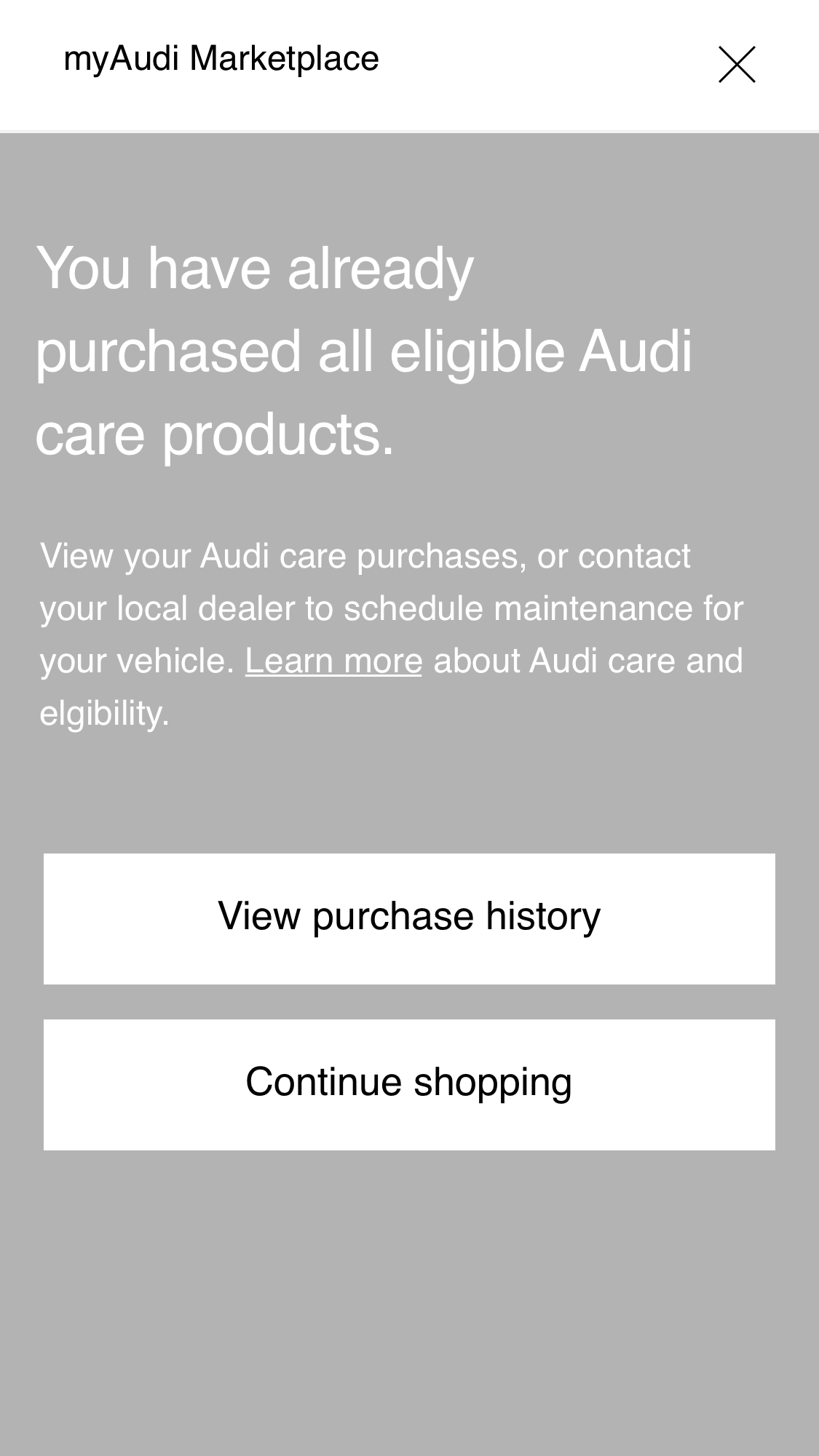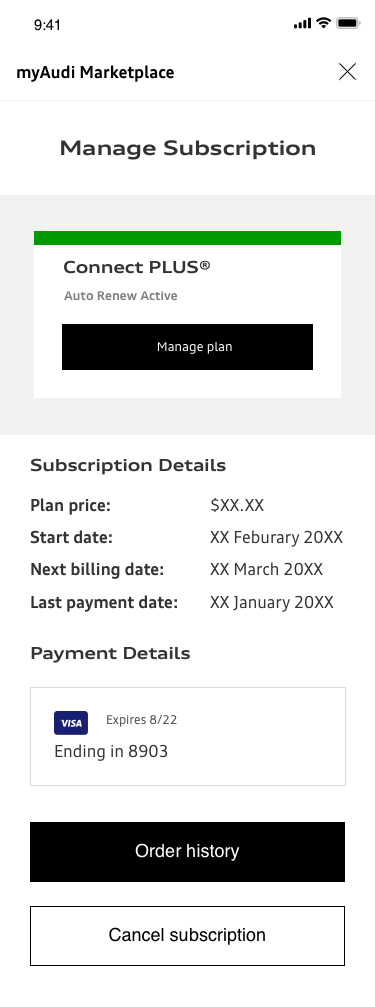Audi eCommerce
Why? To create a revolutionary premium experience for Audi enthusiasts, fans, and owners through a scalable e-commerce solution to purchase mobility services and products.
The Process
As a UX Designer, I was a part of the discovery team (Scrum Master, Product Owner, Solutions Architect), and worked with the delivery team (UI Designer, Front-end + Back-end Developers, QA).
UX Responsibilities
Define Customer Experience and User Interface Design
Interpret Business Requirements
Develop wireframes
UX Copywriting
Ensure Corporate Identity guidelines
Collaborate with and present to cross functional teams and stakeholders
Overview
The Challenge
The current purpose of the eCommerce marketplace is to allow myAudi users to purchase and manager digital subscriptions. There are longer term plans to add physical products to the marketplace.
Business Goals
Audi of America is going through a digital transformation. They have noted key opportunities in the digital business, with eCommerce as a solution for several of them.
Areas of Focus
Marketplace - Authentication, Shopping, Checkout
Purchase History
Subscription Management
Payment Profile
The Miro e-commerce UX map was a source of truth and a tool to align with stakeholders, product managers, and the development team. I used the tool to map out user flows and the interactions, system checks and dependencies.
Samples
Wireframes and Designs
Sample of Component Ideation for Card Succession
This was an exploration of how we could use cards that are differentiated at the multi levels of the marketplace: Home, Category, and Product.
Wireframes Examples
Marketplace Authentication
Set Preferred Dealer
Previous to our the myAudi marketplace, customers could only purchase digital products at their local dealership. Due to profit sharing agreements with the dealerships, business stakeholders required that we have users select the dealer that they want to purchase their digital subscription with. Most users have a preferred dealer on their myAudi account, so that could be pulled to use for this requirement. For users without a preferred dealers set, the business proposed that the user select the dealer at the product level or during checkout.
We believed that users would be confused about why they are selecting a dealer while in the process of purchasing a digital product. We pushed for the dealer selection to be prompted upon entering the marketplace. Our proposed solution also served as the “preferred dealer” selection, so this dealer was saved back to their myAudi profile instead of separately in the marketplace.
How the marketplace evolved and scaled
Over the two years I worked on myAudi Marketplace, it evolved and scaled as we added new products onto our platform and redefined what our “MVP” was. On the left, our marketplace originally started off with one type of product - Audi connect plans. We later on added in Function on Demand, and Audi Care, which required another level of hierarchy to categorize the products. The product detail page also evolved with adding in a product details section (which was still limited due to lack of a content authoring ability).
Set Vehicle Mileage
Another authentication point for product purchase was vehicle mileage for Audi care products. Audi care products are bundled service plans where Audi owners can have their car serviced at predetermined mileage points such as when their car is at 25k miles, and at 35k miles. To mitigate confusion and only show products that customers are eligible for, we prompt the user to enter their vehicle mileage upon entering the Audi care category.
Checkout
Payment Profile
Subscription Management
Upgrade and Downgrade Plans
Results & Key Takeaways
Taking the MVP approach
The eCommerce workstream had many moving parts. We had to understand the big picture, then segment the project into smaller deliverables. Consistent and constant communication with the product owner was key in my design process. Often, my designs would be more geared toward the full experience, and I had to learn to strip down my designs to key features that were needed in the MVP, and make decisions on whether or not something was vital to the user experience in the first release.














































